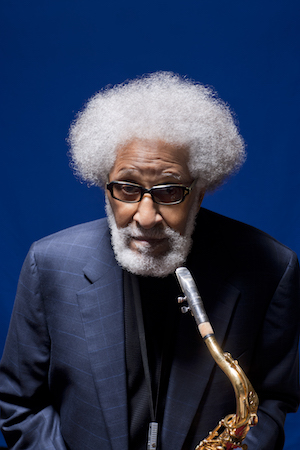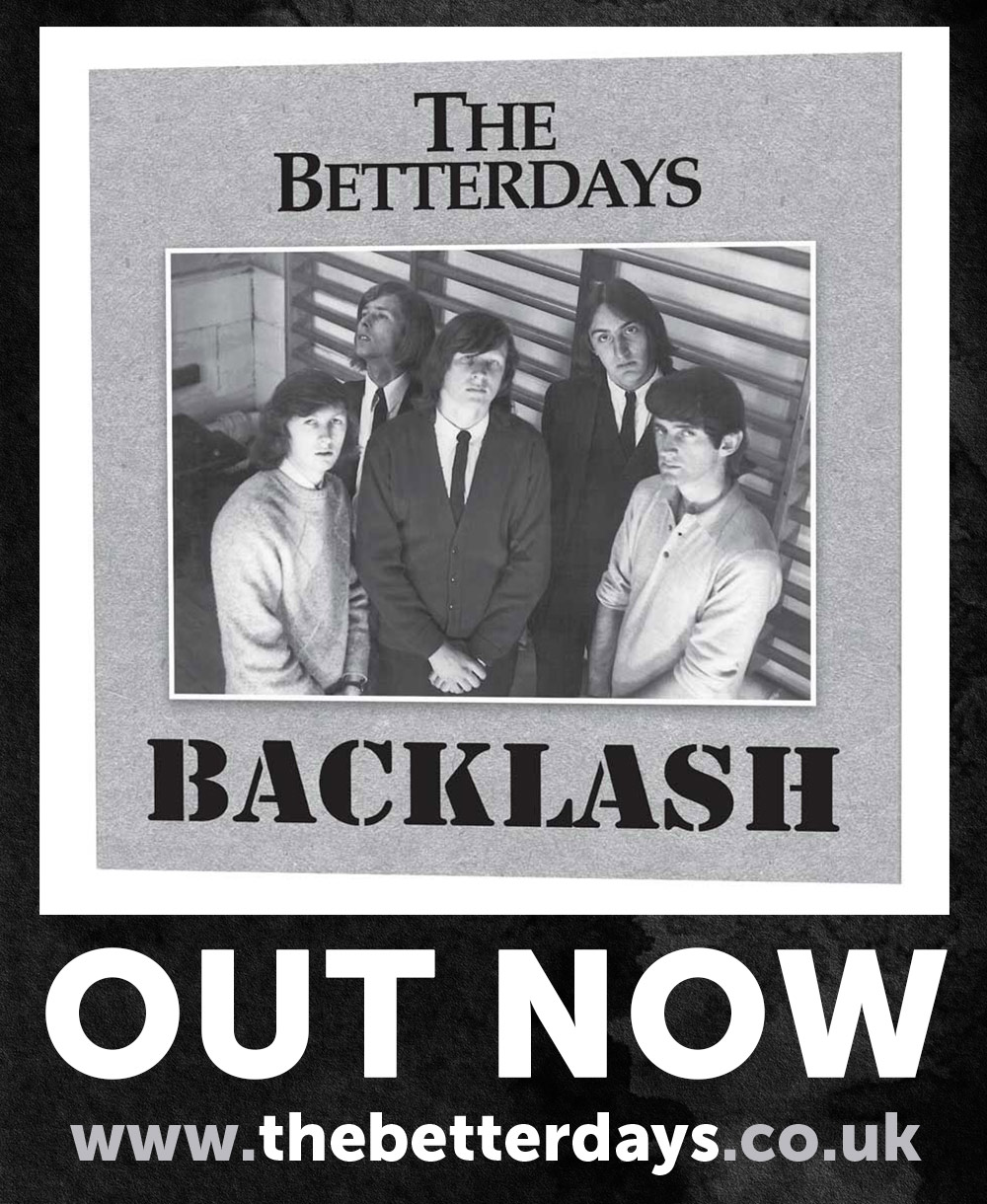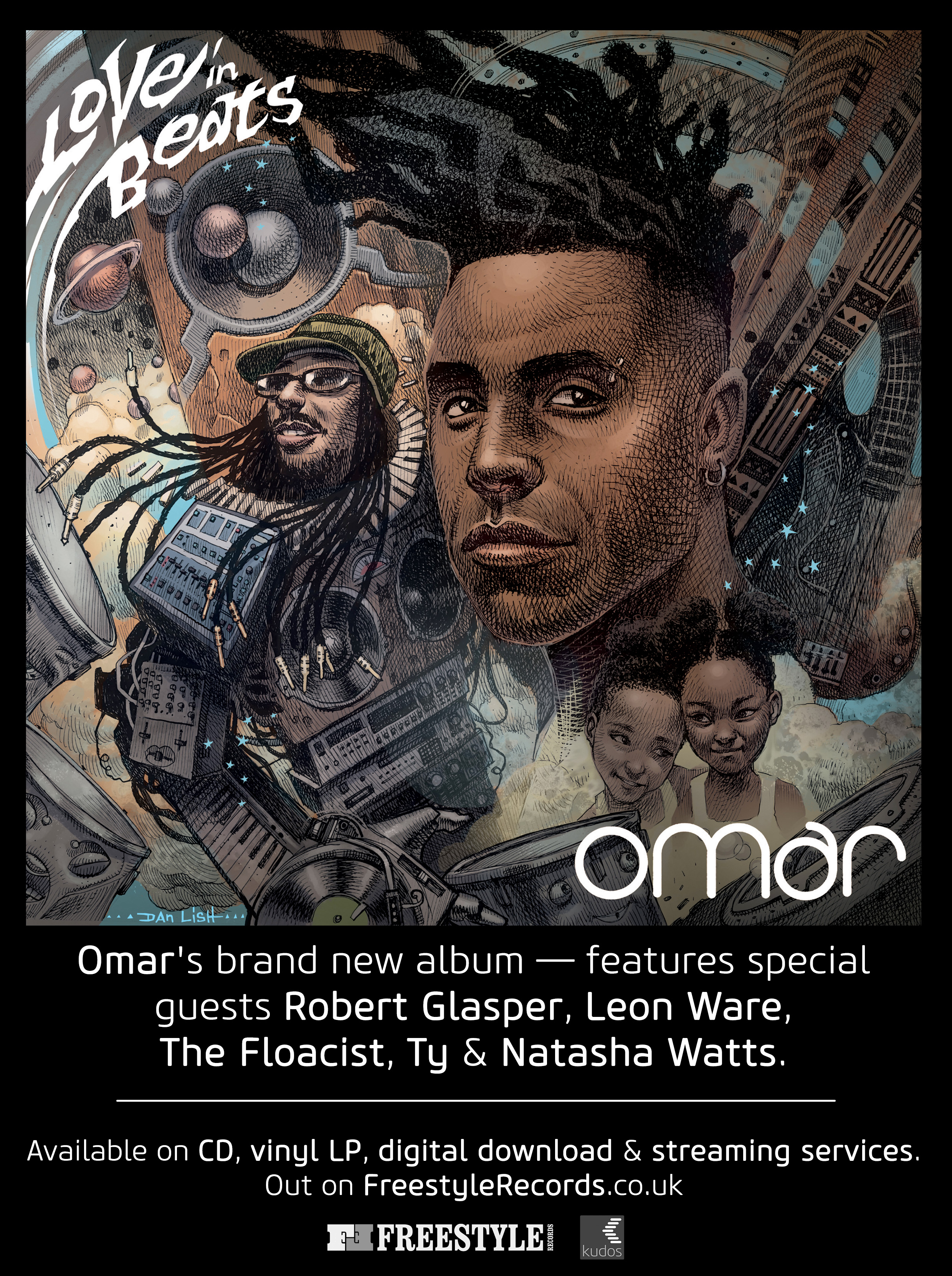Sonny Rollins, the 86-year-old jazz giant of the saxophone, speaks exclusively to Music Republic Magazine editor Simon Redley about his amazing career and how he is coping with forced retirement from playing.
Theodore Walter Rollins, nicknamed ‘Sonny’ as the youngest of three, was born on September 7th, 1930 in New York City. He grew up in Harlem not far from the Savoy Ballroom, the Apollo Theatre, and the doorstep of his idol, Coleman Hawkins.
After early discovery of Fats Waller and Louis Armstrong, he started out on alto saxophone, inspired by Louis Jordan. At the age of sixteen, he switched to tenor, trying to emulate Hawkins. He also fell under the spell of the musical revolution that surrounded him; Bebop.
He began to follow Charlie Parker, and soon came under the wing of Thelonious Monk, who became his musical mentor and guru. Living in Sugar Hill, his neighbourhood musical peers included Jackie McLean, Kenny Drew and Art Taylor, but it was young Sonny who was first out of the pack, working and recording with Babs Gonzales, J.J. Johnson, Bud Powell and Miles Davis before he turned twenty.
In the early fifties, he established a reputation first among musicians, then the public, as the most brash and creative young tenor on the scene, through his work with Miles, Monk, and the MJQ.
He recorded with Miles Davis, the Modern Jazz Quartet, Charlie Parker and Thelonious Monk between ‘51 and ‘53. Joining the Miles Davis Quartet in 1955.
Miles Davis was an early Sonny Rollins fan and in his autobiography wrote that he “began to hang out with Sonny Rollins and his Sugar Hill Harlem crowd…anyway, Sonny had a big reputation among a lot of the younger musicians in Harlem. People loved Sonny Rollins up in Harlem and everywhere else.
He was a legend, almost a god to a lot of the younger musicians. Some thought he was playing the saxophone on the level of Bird. I know one thing–he was close. He was an aggressive, innovative player who always had fresh musical ideas. I loved him back then as a player and he could also write his ass off…”
Sonny acquired a nickname,”Newk.” As Miles Davis explains in his autobiography: “Sonny had just got back from playing a gig out in Chicago. He knew Bird, and Bird really liked Sonny, or “Newk” as we called him, because he looked like the Brooklyn Dodgers’ pitcher Don Newcombe. One day, me and Sonny were in a cab…when the white cabdriver turned around and looked at Sonny and said, `Damn, you’re Don Newcombe!”
“Man, the guy was totally excited. I was amazed, because I hadn’t thought about it before. We just put that cabdriver on something terrible. Sonny started talking about what kind of pitches he was going to throw Stan Musial, the great hitter for the St. Louis Cardinals, that evening…”
In 1956, Sonny began recording the first of a series of landmark recordings issued under his own name. Between 1959 and late `61 though, he withdrew from public performance.
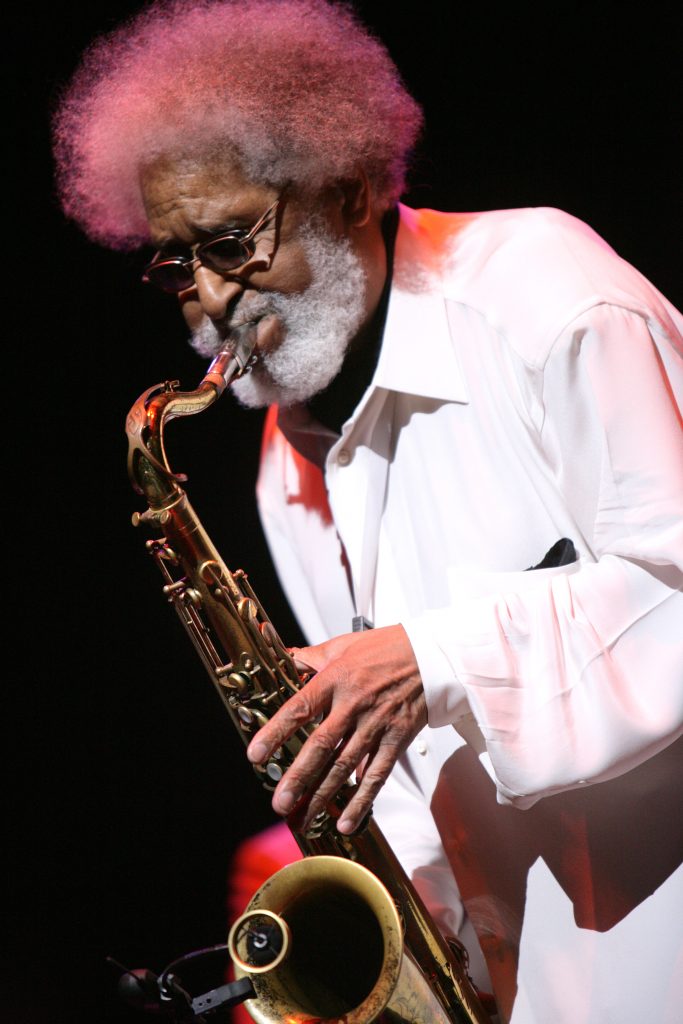
Sonny remembers that he took his leave of absence from the scene because “I was getting very famous at the time and I felt I needed to brush up on various aspects of my craft. I felt I was getting too much, too soon, so I said, wait a minute, I’m going to do it my way. I wasn’t going to let people push me out there, so I could fall down. I wanted to get myself together, on my own. I used to practice on the Bridge, the Williamsburg Bridge because I was living on the Lower East Side at the time.”
In 1958, he appeared in Art Kane’s famous photograph, “A Great Day in Harlem,” 57 notable jazz musicians on the steps of a tenement building in New York. Sonny is one of only two surviving musicians from the photo, as of December 2016. The other being Benny Golson, who will be 88 in January 2017.
Sonny took yet another sabbatical in `66. “I was getting into Eastern religions,” he remembers. “I’ve always been my own man. I’ve always done, tried to do, what I wanted to do for myself. So these are things I wanted to do. I wanted to go on the Bridge. I wanted to get into religion.
“But also, the Jazz music business is always bad. It’s never good. So that led me to stop playing in public for a while, again. During the second sabbatical, I worked in Japan a little bit, and went to India after that and spent a lot of time in a monastery. I resurfaced in the early 70s, and made my first record in `72. I took some time off to get myself together and I think it’s a good thing for anybody to do.”
His wife Lucille became his business manager. He won his first performance Grammy for “This Is What I Do” (2000), and his second for 2004’s “Without a Song” (The 9/11 Concert), in the Best Jazz Instrumental Solo category (for “Why Was I Born”). In addition, Sonny received a Lifetime Achievement Award from the National Academy of Recording Arts and Sciences in 2004.
“The thing about me is that I always wanted to do more, and I’m sorry I wasn’t able to do more”
In June 2006 Rollins was inducted into the Academy of Achievement – and gave a solo performance – at the International Achievement Summit in Los Angeles. The event was hosted by George Lucas and Steven Spielberg and attended by world leaders as well as distinguished figures in the arts and sciences. Since 2006, Rollins has been releasing his music on his own label, Doxy Records.
Rollins was awarded the Austrian Cross of Honor for Science and Art, First Class, in November 2009. The award is one of Austria’s highest honors, given to leading international figures for distinguished achievements. The only other American artists who have received this recognition are Frank Sinatra and Jessye Norman.
In August 2010, Rollins was named the Edward MacDowell Medalist, the first jazz composer to be so honored. The Medal has been awarded annually since 1960 to an individual who has made an outstanding contribution to his or her field.
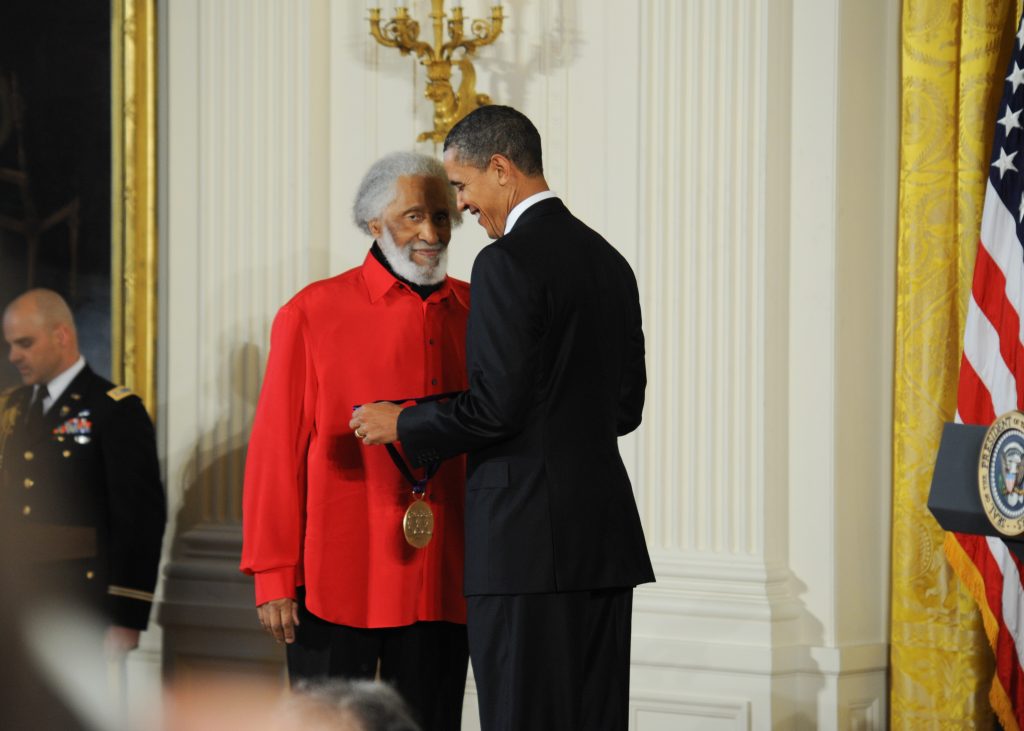
Yet another major award was bestowed on Rollins on March 2, 2011, when he received the Medal of Arts from President Barack Obama in a White House ceremony. Rollins accepted the award, the nation’s highest honor for artistic excellence, “on behalf of the Gods of our music.”
On December 3, 2011 Sonny Rollins was one of five 2011 Kennedy Center honorees, alongside actress Meryl Streep, singer Barbara Cook, singer/songwriter Neil Diamond and cellist Yo-Yo Ma. Rollins said of the honor, “I am deeply appreciative of this great honor. In honoring me, the Kennedy Center honors jazz, America’s classical music. For that, I am very grateful.”
Speaking to me on the ‘phone from his Woodstock home outside of New York, at 11am US time, I open our chat reciting just some of the accolades that have been bestowed on him, from “legend”, “colossus” “giant” and many more. Sonny Rollins IS Jazz Royalty. How does that feel?
He laughs: “Well I never let it go to my head. I am always a musician that’s trying to get better, so I didn’t pay too much attention to it myself.” So how does he see himself in status and what he’s achieved?
“I don’t know. I have to let other people say if I’m important and what I’ve accomplished – if I’ve accomplished anything. I don’t want to say myself. I don’t think I should make my own judgement. That’s up to other people. Up to them and what they feel about it.”
Sadly, ill health forced early retirement on Sonny in 2012, when he gave his final performance. Boy, does he miss it. “Oh, I miss it tremendously. I had a health condition, a health issue, so I had to stop playing. I’m OK, but still not able to play.”
“I’m surviving other than that. I’m not able to blow my horn. I never realised how much energy it took to blow my horn, until I got a condition where I couldn’t blow my horn.
“It’s tremendously a problem for me (sic). I had to go through a lot in my life to be able to live without playing my horn. I played my horn 24/7 and that was all my life was about. Even my wife knew that; she’d say, ‘OK Sonny, your horn comes first and I come second. ‘I said OK,” he chuckles.
He fills his time in the pursuit of spiritual inner peace. “I’m very much interested in yoga and Buddhism and got interested many years ago. I spend my time trying to improve my yogic perception of life. It was very hard at first, but it’s got better and I am able to accept what life has given me now.”
He had a “long innings playing that sax.” He chuckles at the comment. “Yeah, and I’m very grateful about it.” So are your fans, Sonny. “Well, I’d like to thank them very much. I appreciate all of their devotion to me and I give it right back to them. I give them the love that they gave to me; I give it back to them. “
A very spiritual person, into ecology and treating the planet and fellow man the right way, he explains his philosophy.
“I’m trying to live in a way where I don’t have to say anything, where I don’t have to do anything that I don’t believe in. So I am trying not to lie about anything, and do anything in life that I don’t believe in.
“At 86-years-old, you are allowed that. I don’t need to engage in anything that I don’t feel is correct, because I want to live a correct life. Being truthful, being honest to people, being good to people.
“This is the yogic life. So that’s my goal now, that’s what I’m living for now. To improve myself as a human being, that way I will have a good influence on people.
“It is never too late to be a better person. It is always up to us; every day we wake up we have another opportunity to be a better person. To be a kinder person, not to hurt anybody. Not to insult anybody…everyday you wake up, you have a chance to get closer to that goal.
The main horn he played for many years was christened ‘Henrietta’, by his wife Lucille, who he was happily married to for more than 40 years and who became his manager. She died in 2004.
“A very fortunate thing that happened to me in my life, I had a good marriage and someone who cared for me. I was very blessed in so many ways in my life. I had my music, a good relationship with my wife. I had a lot of people who liked my music, so I’m very satisfied in a sense.
Sonny is the youngest of three children. His older sister, who was two years older than him when she passed away. His brother is 91, then there’s Sonny, 86-years-old. He has a step daughter, a nephew and a niece.
He’s had a few periods where he’s stopped playing in public or recording. So has he ever fallen out of love with his horn, and wanted to quit playing for good?
“A long time ago I would have a feeling that I wasn’t getting any place, but that would only last maybe a very short time. Maybe a day and next day I’d realise I’d better not think that way.”
He is in love. With the sax. Its sound and its look. “It is a very precious instrument to me because it was a hybrid; a mixture of the woodwind and the brass, and a lot of people didn’t like it when it came out.
“But it has a very special sound to it. It’s a very mystical instrument. It reminds me of the horn of plenty.
“I love horns. I love that idea of a horn. Maybe I’ll end being some place where I’ll have all sorts of horns around me; bass saxophones, bass flutes, alto saxophones, sopranino saxophones, tenor……maybe that will be what heaven will look like. I don’t know, I hope so.”
While it is sad the man cannot do what he loves doing above anything else; to blow his beloved saxophone, he has given so much and created a truly golden legacy. A gigantic reputation and a wonderful musical legacy, which no one can ever erase and which will live on forever.
“Oh, that’s very kind of you. I am very moved by you saying that. Thank you so much, thank you so much. The thing about me is that I always wanted to do more, and I’m sorry I wasn’t able to do more.
“Because I still have a lot of music going through my head every day. I’m still moving my fingers like I’m playing my saxophone, so I always wanted to do more. But, I’m happy that I’ve done what I’ve done and I’ve got through to some people, and I’ve left a helping sound (sic) for some people.”
So what is jazz? “I think jazz is something like a level of music which is sort of in the air. Something you can’t really define. But when you hear it, you can hear it. If you hear some great musicians play; it has a great effect on you and you don’t know what it actually is.
“You can write music of course, and a lot of people all over the world play it, but what it is itself is something of a very spiritual nature. Jazz is a very spiritual nature.
“That’s why I am such a blessed person myself today, because when I used to practice, I’d just think about nothing. My mind would be empty and I could be there forever, and just play.
“My mother used to have to call me when I got my saxophone, my first one, and I’d be in the room playing, practicing and she’d say ‘Sonny, Sonny, it’s time to eat dinner; come.’
“I didn’t even know what she was talking about, I was already in heaven. That’s the first time I ever played a saxophone at about seven-years-old.”
“Music takes you to another place, a different world. This world is not here for us to go through a lot of things. It is here for us to learn. It is not a beautiful place where everything is wonderful, we know that. But when you listen to music, it takes you to that spiritual place.
Sonny has collected an archive of around 250 live recordings of his concerts dating back to the 1960s, and has released four albums thus far; the latest, “Holding The Stage,” released in April 2016. Which I can confirm has some stunning playing on it from the Maestro. Tracks recorded live in London in 2007, France, Czech Republic, Finland and Boston USA between 1996 and 2007. More to come too.
“I’m just working through them now. I have got to listen to them and see if I like them, and then I’ll release something else. But I’m not a big fan of my own music you know.
“I’m not one of these guys; if you came to my house you’d hear me playing a Sonny Rollins record. Or you’ll see a big picture of Sonny Rollins on the wall. That’s not the type of a person that I am. So, it’s hard for me to listen to my music, but I’ll probably find something else to release from my archival records that I have. Yeah.”
He thinks there may well be a few unreleased studio tracks and alternate takes knocking about elsewhere. He would dearly love to make another studio album, but is unable to play.
“I have music going around in my head, because there’s always new things happening and music has to reflect life, as it’s going on. But it’s down to whether I can blow my horn again.”
Best moments of an eight decade career? “In my early days when I was playing with Bud Powell, playing with Miles Davis, playing with Thelonious Monk. Then playing with Clifford Brown the great trumpet player, Max Roach the drummer, Art Blakey the drummer, Elvin Jones the drummer.
“The battles I had with John Coltrane, with Dexter Gordon and Coleman Hawkins. The great time I had with playing with Lester Young. The way I can think back about that, is by thinking of the great people that I played with. And when I played with those people, that is when the great moments of my career come into it.”
There is no one else still with us who can say they have played with as many jazz greats. ‘You literally are the last man standing, Sonny.’ “Well, I don’t know about that, but I’m a very blessed guy because to have lived, listened and played with those people and knew them, it’s beyond any gift I could get in this world.
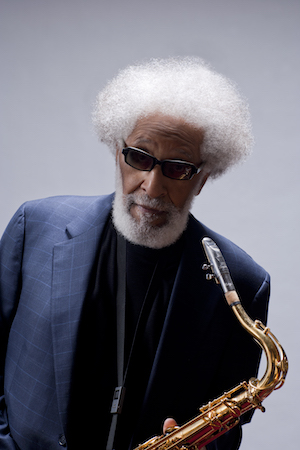
“There’s no gift greater than that. I’ve had the greatest gift that I can have. I’m very lucky and a very blessed person to have played with these people. There are others; Fats Navarro, the great jazz trumpet player, JJ Johnson, Dizzy Gillespie… so yes, I played with some great, great people.”
He names the legendary pianist and composer Thelonious Monk as his main mentor and the man he learned most from. Spotting his talent on the sax’, taking him under his wing from a young age.
“My guru would be Thelonious Monk, because I started playing with Monk when I was pretty young, and Monk liked my playing a lot He took me round with him and we used to hang out together and I learned a lot from Monk.
“Not only in his music, but the kind of person that he was. That was very important. We used to call Monk ‘The High Priest’. He was a very honest person. The most honest person that I have ever met in my life. He was a really kind person and a very good person. He had many attributes.
“I learned just by being around Monk. He used to be at my house and practice on my piano all the time, and we were good friends as well as the music. He was just a very fine person, and I’ve met a lot of fine people. But Monk was one of the best people I have met in my life.”
Sonny tells me he and his musical colleagues were always seen as “weirdos” and “odd.”. We were outcasts.”
“The difficulty of being a jazz musician was that we were looked at as different people, and to a lot of people we were the outcasts. So a lot of musicians; and this goes back to Johann Sebastian Bach…people looked on him like he was weirdo. Bach used to write music so he could get a lot of beer, did you know that?
“So you see, people who create music like the people I have been so fortunate to be with, are looked at as odd people in society. Because of that, a lot of guys used drugs, alcohol, smoked a lot of cigarettes.
“We destroyed ourselves because we were looked at and deemed as different people. As strange people and weird people.
“It’s what I had to go through and what my musician friends had to go through. That’s OK. It’s worth it for what I have gotten out of music, and the places it has taken me. Hearing music and living this music, I’d do it a million times again, so I am not complaining about it.”
In early 1950, Sonny Rollins was arrested for armed robbery and spent ten months in Rikers Island jail before being released on parole. In 1952, he was re-arrested for violating the terms of his parole by using heroin.
A former heroin user, he went to rehab in 1955. One of the earliest to be prescribed methadone to successfully come off of Heroin.
Favourite album and songs from his incredible catalogue? He has appeared on something like 85 albums, in his own right and as a guest star. Kicking off with “Sonny Rollins and the Modern Jazz Quartet,” in 1953.
“Well, I am not a big, big fan of my own music. Not going to hear Sonny Rollins records if you visit me at my home. That’s not my personality, that’s not who I am. So it’s very difficult to say, and I don’t listen to my music.
“When I put out my archival music, it is very hard because I have to listen back to things I have done and that’s hard for me.
“Saxophone Colossus seems to have reached a lot of people.” So what makes Saxophone Colossus the classic that it is and stand the test of time? Still seen as a very important recording some 60 years after he made it in 1956.
“I think the musicians that were on it made it great. One of the greatest drummers in the history of jazz; Max Roach. I had the great Tommy Flanagan, a tremendous soloist and a tremendous accompanist. I had a very fine bass player, Doug Watkins.
“Those guys came together with me and helped me create what was created that day.” It really is a milestone record. “A lot of people have told me that. I’m very grateful for that. “
In 1956, Sonny recorded “Tenor Madness,” with sax legend John Coltrane on the title cut. “That was a great album because I had great musicians. I had ‘Trane’ on there, I had the rest of Miles Davis fine rhythm section on there.
“It was a great thing for ‘Trane’, even though ‘Trane’ was older than me and had been around more than me, I was more popular at that time. So it was a good record for ‘Trane’, and it was a landmark record which is still played a lot.”
The phrasing and structure of Sonny’s playing on probably his most famous composition, the instrumental “St Thomas,” is like no other player. Something “other worldly” going on there! Where did the inspiration come from for that style of playing on that track?
Sonny laughs at the question, firing one back to me double quick: “Where does love come from?” He laughs again. “That would be my answer. I can’t tell you where it came from. If I could, I’d go there every time I play. Go right there and know just what to do. It’s the spiritual aspect of music.”
“I did not want to be credited; I was ashamed to play with the Rolling Stones”
Can he say what he feels his greatest achievement is? “Well, one of the greatest things in my own mind was to take time off to go to the bridge. Because I wanted to study more, I wanted to practice more. Everybody said, oh no, don’t do it, don’t go away. I went away because I wanted to do it.
“I wanted to follow my own mind. So that was something that I think all musicians should do. Don’t be influenced by other things that people might tell you, and make you lose confidence in yourself. I’ve always had confidence in myself, fortunately.
“So it didn’t matter what people told me, I knew what I wanted to do and I was able to do it. I would say that’s something I’m very proud of in my life.”
I think you might know you are pretty famous and/or respected, when asked to appear as yourself in The Simpsons. In an episode of season 24 in 2013, “Whiskey Business.”
Sonny appears as a hologram to sax-playing Lisa, when she takes exception to a “Tupac-at-Cochella”-style hologram of blues icon Bleeding Gums Murphy, and starts a letter writing campaign to stop this holographic exploitation. In a previous episode, she had gone off to a bridge to practice her saxophone playing, just like Sonny did.
“I’m a guy that practices all the time, that’s why I went to the bridge and was up there for days. I’d play any place, wherever I am.
“I’d go to the beach; I used to take Ornette Coleman out to the beach in California and we’d be playing to the Pacific Ocean. Wherever I am, I want to go and play, that’s what I’d like do all the time, because I’m trying to get to that spiritual place, musically. I haven’t got to that place yet.”
In 1959, Sonny toured Europe for the first time. He regularly played at Ronnie Scott’s famous jazz club in London, at both the old and current location and performed a residency in 1965, one show there became a bootleg album. For many years, Sonny played concert halls including London’s Royal Festival Hall and his last UK show at the Barbican. He was pals with and admired British jazz guys Ronnie Scott, Stan Tracey and drummer Phil Seaman.
The most surprising revelation in the 90 minute chat with Sonny, cropped up when I asked him about his work with The Rolling Stones. He played on three tracks on their 1981 album “Tattoo You,” but he was un-credited. Did it annoy him not being credited?
“I wanted to be un-credited. I did not want to be credited. I was ashamed to play with the Rolling Stones.” There is then 10 seconds of silence, before I ask; ‘really’? Sonny asks me: “Is that a shock?” Yeah it is. He laughs.
“Well, the Rolling Stones might be big to you, but to me the Rolling Stones were just some kind of a rock band from Europe. I didn’t have to be respectful…my wife made me do that record.
“I would not have done that record. I thought it was a come down for jazz, to be playing on some kind of an English rock and roll record. That was my thinking. I did not want to be credited, no, no.
“When that record came out, The Stones wanted me to do a tour with them, but I wouldn’t do it because I was ashamed. I’m Sonny Rollins. I’m supposed to be representing the top of jazz.
“Playing second fiddle to a British rock group didn’t make sense to me. I made the record for her and that was it. I’m not a fan of theirs and I do not know their work.” Well, Stone me! I do not think it hurt their career much; currently celebrating their 12th UK number one album for their blues filled, “Blue & Lonesome.”
So we arrive at THAT sensitive question: How does Sonny Rollins want to be remembered? He laughs. “It’s up to people. I don’t care. It is up to them how they remember me. I don’t know how they are going to remember me.
“I want to be remembered as a nice guy. ‘Oh yeah, I knew Sonny Rollins. He was a nice guy, he helped me do this’ That would be good, if it be true. Hopefully that is how they will remember me.”
I talk of the lovely photographs I have seen of him playing up on his bridge and on the beach. His voice trembles slightly. “Well that’s beautiful; because then I was in my heaven. I was in heaven when I was on the bridge playing, and at the ocean, playing up to the sky. I was in heaven.”
Please go read the second part of this fascinating insight into the life and career of a true jazz icon – EXCLUSIVELY at Music Republic Magazine in the Features Zone. Don’t miss it!
By Simon Redley



